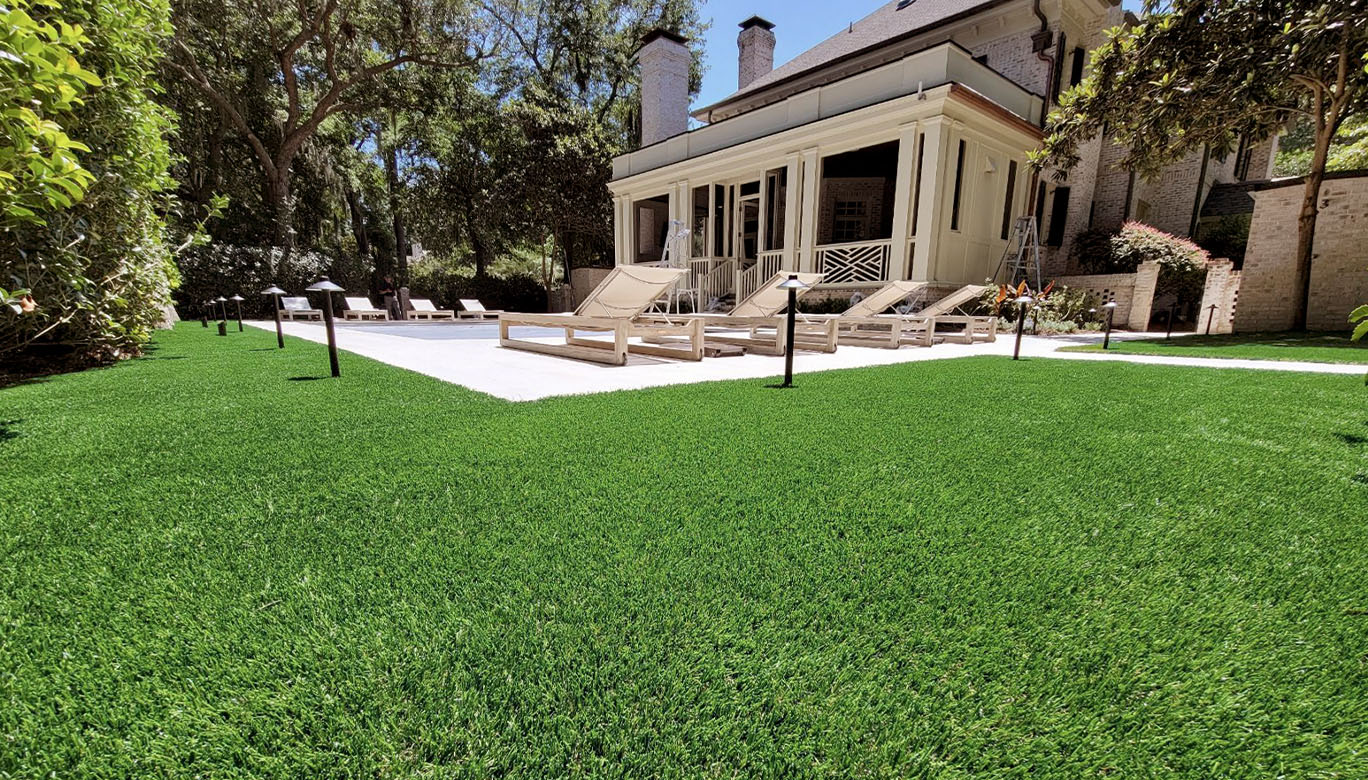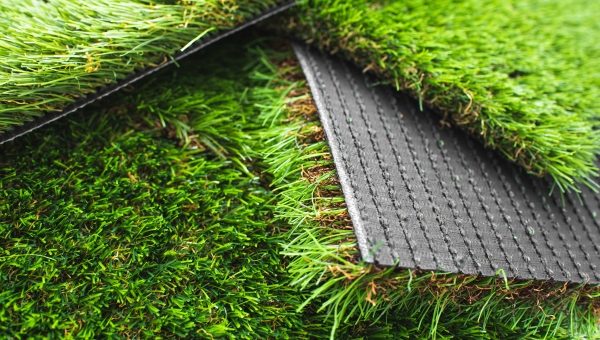Leading Phoenix Turf Companies Delivering Superior Synthetic Grass Options
Leading Phoenix Turf Companies Delivering Superior Synthetic Grass Options
Blog Article
See Why Homeowners Prefer Artificial Grass for Sustainable Landscape Design Practices
As homeowners increasingly prioritize sustainability in landscaping, synthetic grass has become an engaging option to traditional lawn. Its capability to preserve water, reduce maintenance efforts, and minimize environmental influence placements it as a sensible selection for those looking for eco-friendly services. The visual appeal and flexibility of synthetic turf provide to diverse design choices. Nevertheless, the ramifications of this shift expand beyond mere ease and aesthetic appeals, prompting a more detailed assessment of how these choices influence broader environmental outcomes. What remains to be discovered is the full scope of advantages that synthetic grass can supply to house owners and the atmosphere alike.
Water Preservation Advantages
One of the most significant advantages of artificial turf is its function in water conservation. In contrast, synthetic grass eliminates this demand entirely, as it does not require irrigation.
Moreover, the installation of synthetic turf can contribute to a more lasting landscape. Home owners can significantly decrease their water bills, enabling reallocation of resources to various other ecological campaigns or house usages. Furthermore, man-made grass is made to withstand numerous weather conditions without the need for supplemental watering, making it a perfect choice for areas encountering water scarcity.
The ecological advantages prolong beyond prompt water cost savings. By decreasing water consumption, man-made grass helps to minimize the effects of climate adjustment, protecting important communities that are endangered by excessive water removal. As sustainable landscape design methods gain grip, synthetic lawn arises as an accountable choice for home owners seeking to develop green outside rooms.
Decreased Upkeep Initiatives
Synthetic lawn substantially reduces upkeep initiatives compared to typical yard lawns. With fabricated turf, home owners can eliminate the lengthy jobs connected with all-natural landscape design, such as mowing, feeding, and weeding. This not only conserves beneficial time but likewise lowers physical labor, making yard treatment accessible for people of all ages.
One of one of the most notable advantages is the absence of normal mowing. Traditional lawns call for regular cutting to keep an aesthetically pleasing height, whereas fabricated turf remains constantly rich without the demand for cutting. Additionally, house owners no more require to use pesticides or fertilizers, which are commonly called for to maintain all-natural grass healthy. This shift not only lightens the workload yet also promotes a neater, much more uniform appearance year-round.
Additionally, synthetic grass is resilient and resilient, needing minimal maintenance beyond occasional brushing and rinsing to remove particles. This convenience of maintenance enables home owners to appreciate their exterior spaces without the consistent concern of upkeep, offering even more time for recreation and family tasks. Eventually, the decreased maintenance efforts linked with synthetic grass make it an enticing choice for those seeking a low-maintenance, aesthetically appealing landscape.

Ecological Effect Decrease
There is a growing recognition of the ecological benefits connected with synthetic grass, especially in terms of water conservation and lowered chemical use. Typical yards need significant quantities of water, specifically in drought-prone regions, bring about enhanced pressure on regional water resources. In contrast, synthetic grass removes the need for watering, drastically reducing water consumption and promoting sustainability.
Furthermore, standard yard maintenance frequently entails the application of herbicides, fertilizers, and pesticides, which can add to dirt and water pollution. Synthetic grass mitigates this environmental hazard by calling for very little maintenance and virtually getting rid of the requirement for damaging chemicals. This not only boosts dirt health and wellness but additionally shields regional ecosystems from poisonous overflow.
Furthermore, the manufacturing of all-natural turf yards normally includes making use of fossil gas for mowing and landscape design devices, further adding to greenhouse gas discharges. By picking man-made turf, home owners can considerably decrease their carbon footprint associated with yard care tasks.
Aesthetic Charm and Flexibility
Along with its environmental advantages, synthetic grass provides substantial visual appeal and adaptability for landscape design. Home owners can achieve a rich, environment-friendly look year-round, eliminating the seasonal fluctuations frequently related to all-natural grass. This consistent visual not just enhances the visual appeal of a building but also contributes to a well-kept and sleek look.
Moreover, synthetic grass is offered in a range of shades, designs, and appearances, permitting modification to fit individual preferences and design themes - Arizona turf. Whether used in residential yards, business rooms, or entertainment locations, it can effortlessly integrate into diverse landscape design layouts, from contemporary minimalist to rich tropical settings
The versatility of synthetic grass prolongs beyond mere look; it can be set up in various areas, consisting of roofs, outdoor patios, and even interior areas, creating opportunities for one-of-a-kind landscaping solutions. In addition, it is ideal for a variety of activities, from youngsters's backyard to pet-friendly environments, giving performance without compromising design.
Ultimately, the aesthetic allure and flexibility of synthetic grass make it an eye-catching Discover More choice for house owners seeking lasting landscaping solutions that do not compromise beauty for environmental duty.

Long-Term Cost Savings
One of the Web Site most compelling advantages of synthetic grass is its capacity for long-lasting cost savings. Unlike natural turf, which requires routine maintenance-- including mowing, watering, fertilizing, and pest control-- synthetic grass significantly reduces these ongoing expenditures. Home owners can conserve a substantial amount on water costs, specifically in areas where water shortage is a pressing concern. The removal of yard care services better adds to monetary savings, as there is no need for customized tools or labor.
Additionally, artificial lawn has a life expectancy of 15 to 25 years, depending on its top quality and usage. This longevity lessens replacement expenses, making it a more affordable choice in the lengthy run. Moreover, the first financial investment in man-made turf can commonly be recouped via the savings accumulated over time.
While the in advance price may appear greater compared to turf setup, the cumulative savings from minimized maintenance and water use commonly outweigh these preliminary expenditures. Inevitably, the adoption of man-made turf not only advertises a sustainable landscaping service but also uses property owners a financially smart alternative that aligns with long-lasting budgeting objectives.
Verdict
Fabricated grass emerges as a compelling alternative for lasting landscaping, offering substantial benefits in water conservation, reduced upkeep initiatives, and decreased environmental influence. As neighborhoods increasingly focus on eco friendly practices, the fostering of artificial turf stands for a progressive action toward accomplishing lasting and resistant landscapes.
Additionally, artificial turf is developed to withstand numerous climatic original site problems without the need for supplementary watering, making it an excellent option for areas dealing with water scarcity. (Arizona artificial turf)

Synthetic turf arises as an engaging alternative for lasting landscaping, offering substantial benefits in water conservation, reduced upkeep efforts, and diminished ecological effect.
Report this page